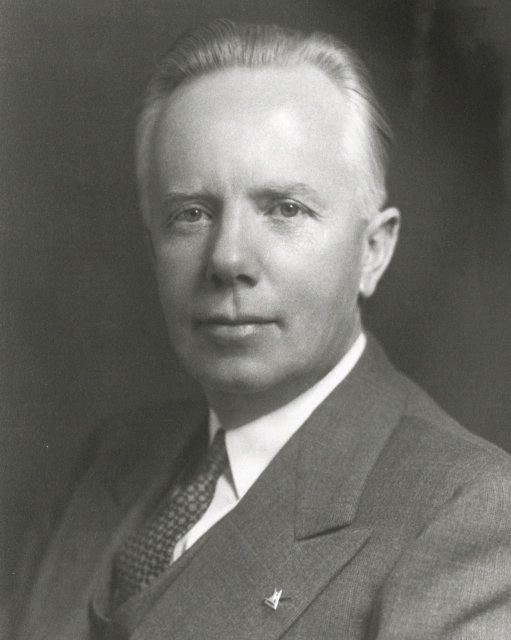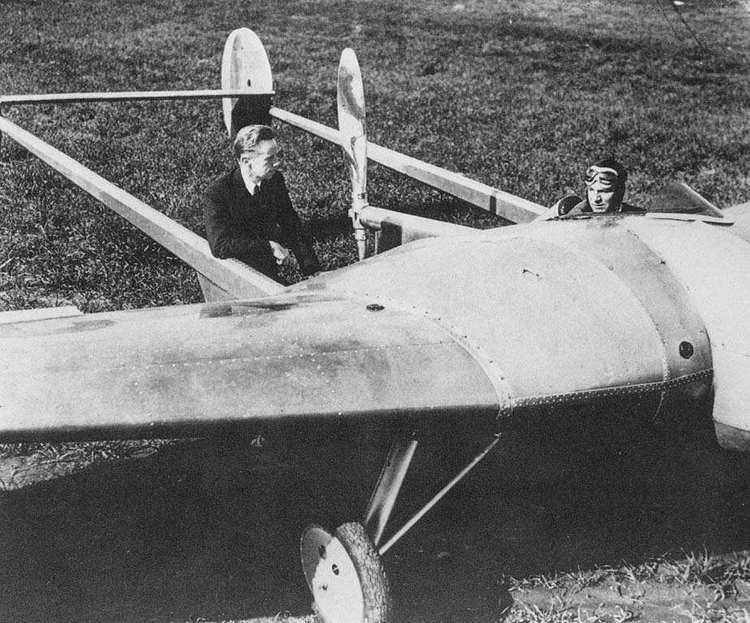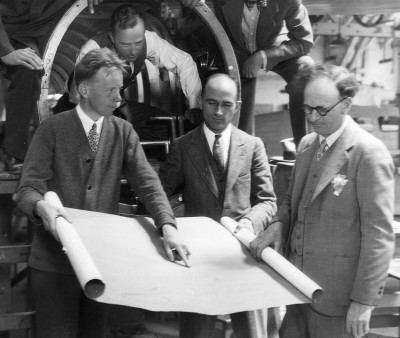Name Jack Northrop | ||
 | ||
Full Name John Knudsen Northrop Occupation Aeronautics EngineerIndustrial DesignerBusinessman Died February 18, 1981, Glendale, California, United States Similar People Allan Lockheed, Collis Potter Huntington, Brian Roper, Phillip Frost, Kent Kresa | ||
F 0471 jack northrop designer
John Knudsen "Jack" Northrop (November 10, 1895 – February 18, 1981) was an American aircraft industrialist and designer, who founded the Northrop Corporation in 1939.
Contents
- F 0471 jack northrop designer
- A tribute to jack northrop and his flying wings
- Entering aviation
- Company founding
- Flying wing and other aircraft
- Later years
- Awards and honors
- References

His career began in 1916 as a draftsman for Lockheed Aircraft Manufacturing Company (founded 1912). He joined the Douglas Aircraft Company in 1923, where in time he became a project engineer. In 1927 he rejoined Lockheed, where he was a chief engineer on the Lockheed Vega transport. He left in 1929 to found Avion Corporation, which he sold in 1930. Two years later he founded the Northrop Corporation. This firm became a subsidiary of Douglas Aircraft in 1939, so he co-founded a second company named Northrop.

A tribute to jack northrop and his flying wings
Entering aviation

Born in Newark, New Jersey, Northrop grew up in Santa Barbara, California. In 1916 Northrop's first job in aviation was in working as a draftsman for the Santa Barbara based Loughead Aircraft Manufacturing Company. In 1923, Northrop joined Douglas Aircraft Company, participating in the design of the Douglas Round-the-World-Cruiser and working up to project engineer. In early 1927, Northrop assisted Jack Ryan of Ryan Aircraft in the larger wing design used on Lindbergh's plane "The Spirit of St Louis" that would later make the New York to Paris flight in May 1927.

In 1927 he rejoined the Loughead brothers and their newly renamed (in 1926) Lockheed Aircraft Company, working as chief engineer on the Lockheed Vega, the civilian transport monoplane with a cantilever wing that produced unusually high performance for that period, and was widely used by such top pilots as Wiley Post, Amelia Earhart, and Hubert Wilkins. In 1929 he produced an all-metal monoplane with pilot and engine within the wing structure. Although this aircraft had booms to attach the tail group, it was in fact the first step toward the flying wing.
Company founding
In 1929, Northrop struck out on his own, founding the Avion Corporation, which he was forced to sell to United Aircraft and Transport Corporation in 1930. In 1932, Northrop, backed by Donald Douglas of Douglas Aircraft, founded another company, the Northrop Corporation in El Segundo, California. This company built two highly successful monoplanes, the Northrop Gamma and Northrop Delta.
By 1939 the Northrop Corporation had become a subsidiary of Douglas Aircraft, so Northrop founded another completely independent company of the same name in Hawthorne, California, a site located by Moye Stephens, one of the co-founders.
Flying wing and other aircraft
While working at this company, Northrop focused on the flying wing design, which he was convinced was the next major step in aircraft design. His first project, a reduced-scale version tested in 1940, ultimately became the giant Northrop YB-35. The Northrop XP-56 Black Bullet, a welded magnesium fighter was one of the more significant of his World War II designs, along with the Northrop P-61 Black Widow, the first American night interceptor, of which more than 700 were constructed.
His inventions continued into the postwar era of jet aircraft, to produce the Northrop F-89 Scorpion all-weather interceptor, the Northrop YB-49 long-range bomber, the Northrop Snark intercontinental missile, and automatic celestial navigation systems. He produced a number of flying wings, including the Northrop N-1M, Northrop N-9M, and Northrop YB-49. His ideas regarding flying wing technology were years ahead of the computer and electronic advances of "fly-by-wire" stability systems which allow inherently unstable aircraft like the B-2 Spirit flying wing to be flown like a conventional aircraft.
The flying wing and the pursuit of low drag high lift designs were Northrop's passion, and its failure to be selected as the next generation bomber platform after World War II, and the subsequent destruction of all prototypes and incomplete YB-49s ordered by the federal government were a blow from which he never recovered, causing his association with Northrop Aviation to become almost non-existent for the next 30 years. In an interview for the Discovery Channel's documentary The Wing Will Fly, his son John Northrop Jr. recounted his father's devastation and lifelong suspicion that his flying wing project had been sabotaged by political influence and backroom dealing between rival Convair and high-ranking officials in the Air Force.
Later years
Northrop dabbled in real estate and lost much of his personal fortune. In 1976, with his health failing, he felt compelled to communicate to NASA his belief in the low drag high lift concept inherent in the flying wing. NASA replied that the idea had technological merit comforting Northrop that his flying wing concepts hadn't been completely abandoned. By the late 1970s a variety of illnesses had left him unable to walk or speak. Shortly before his death in 1981, he was given clearance to see designs and hold a scale model of the Northrop Grumman B-2 Spirit which shared many of the design features of his YB-35 and YB-49 designs. Northrop reportedly wrote on a sheet of paper "Now I know why God has kept me alive for 25 years". In the Wing Will Fly documentary, B-2 project designer John Cashen says: "As he held this model in his shaking hands, it was as if you could see his entire history with the flying wing passing through his mind." Jack Northrop died 10 months later, on February 18, 1981.
Awards and honors
In 1947 he received the Spirit of St. Louis Medal from the American Society of Mechanical Engineers for "meritorious service in the advancement of aeronautics." Investiture in the International Aerospace Hall of Fame came in 1972, and in the National Aviation Hall of Fame in 1974. He was inducted into the National Inventors Hall of Fame in 2003. The B-2 Spirit stealth bomber has the same wingspan as Jack Northrop's jet-powered flying wing, the YB-49.
Northrop's passion for tailless flight was honored by the naming of a giant tailless pterosaur Quetzalcoatlus northropi.
Hawthorne Municipal Airport is also known as Jack Northrop Field in his honor.
